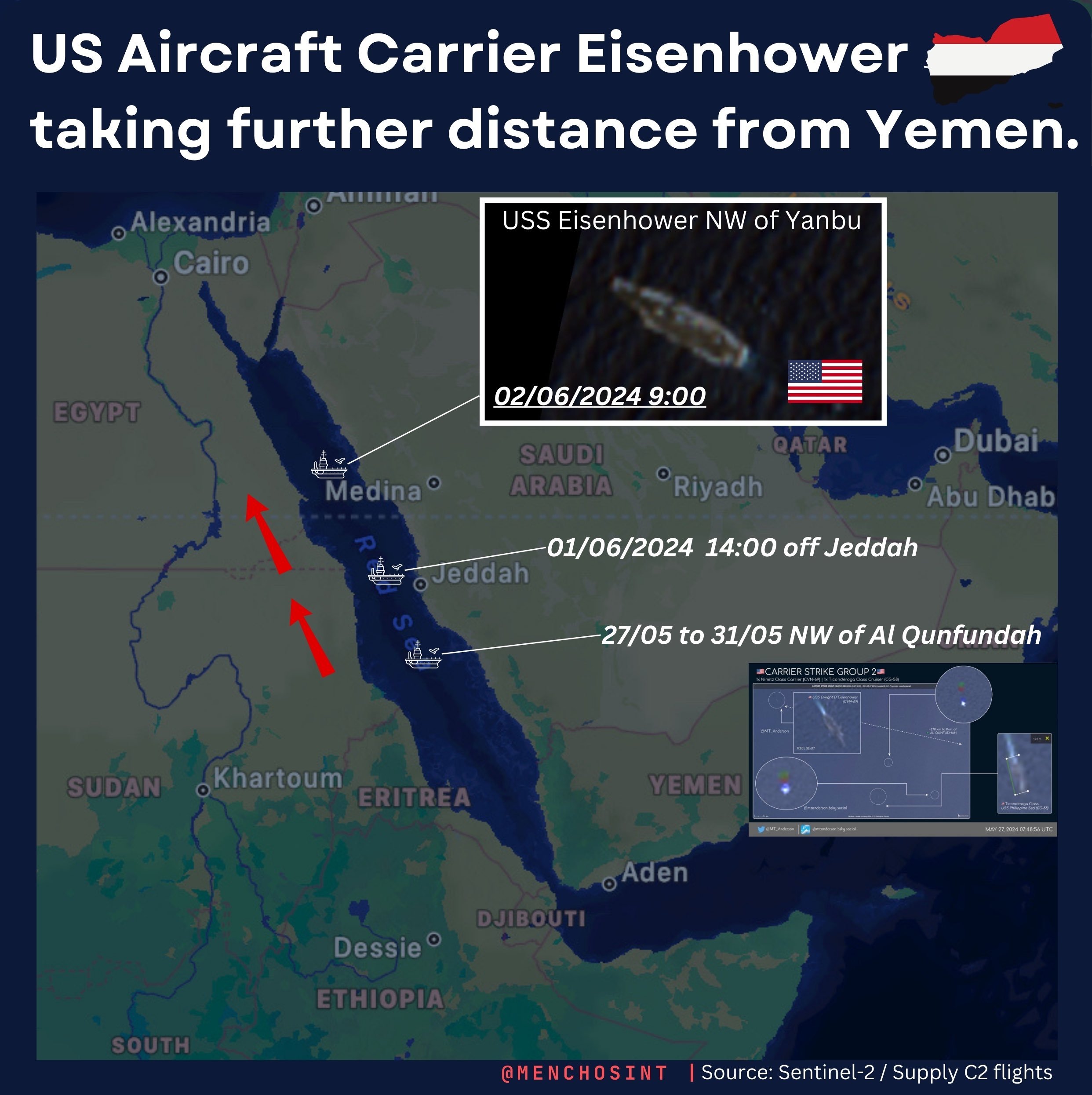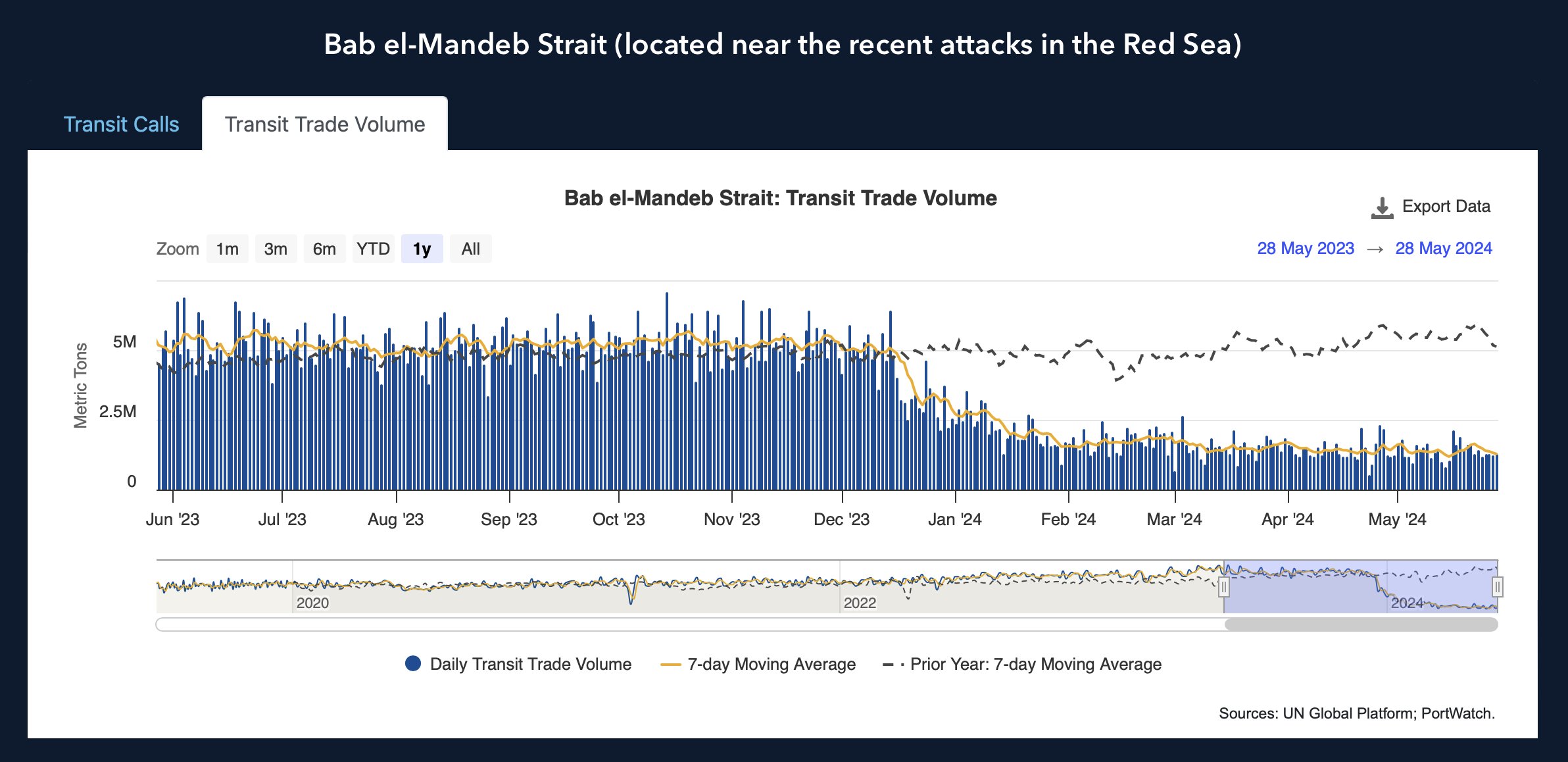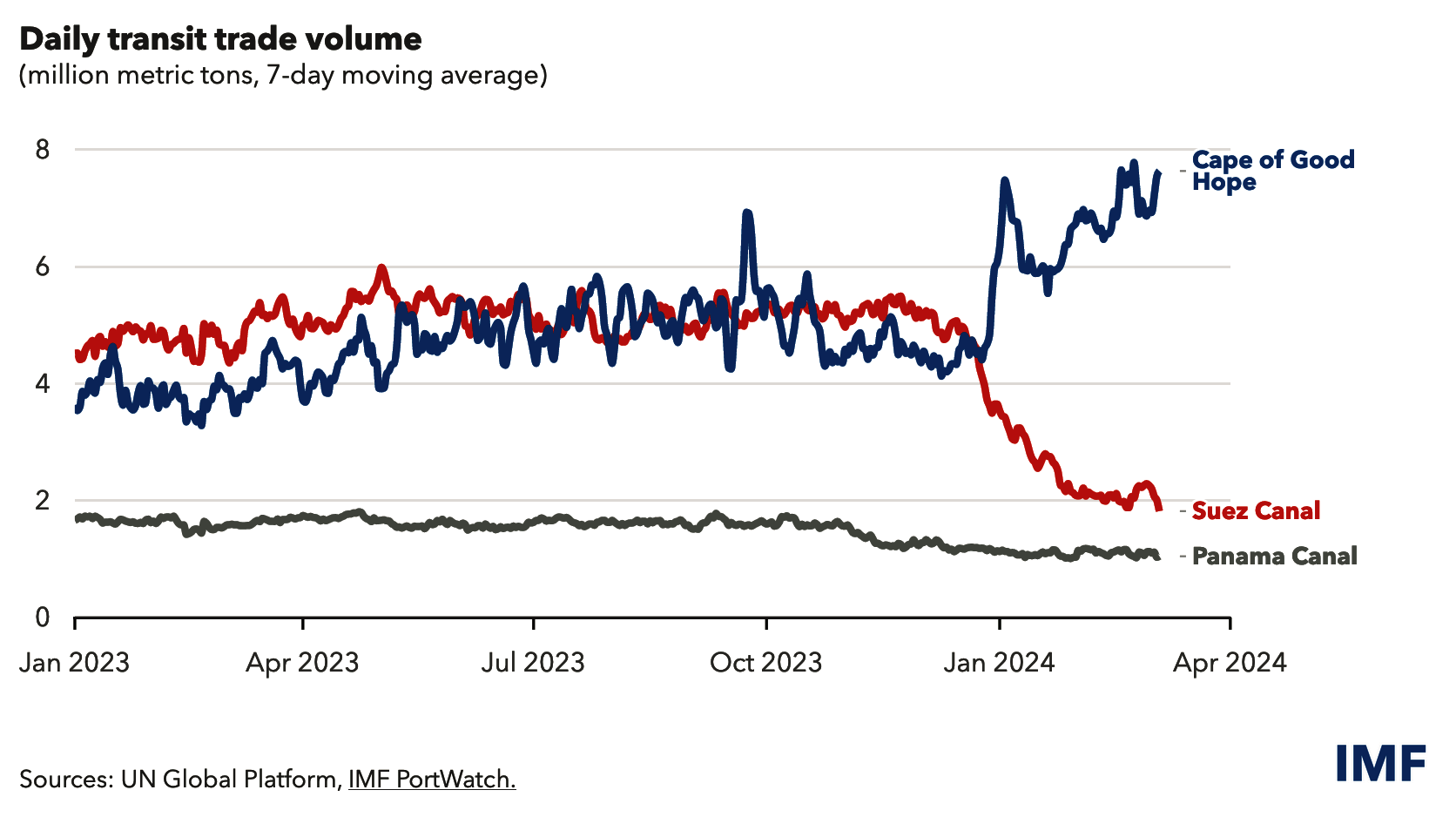Well, the Houthis said they did. And it would seem unlikely, except that immediately after the Eisenhower withdrew north at top speed.

Aircraft carries are incredibly difficult to take out, but it wouldn’t be difficult to mess up the flight deck and at a guess, that’s probably what happened.
On top of that “it’s been five days since the Ike’s regular twice-a-day cargo deliveries via C-2 transport have taken place.”
I don’t know if the Eisenhower got hit, but—its actions are rather suspicious.
If the Houthis can get in even a slight hit, or scare off an aircraft carrier, what do you think China, Russia, Iran or even Hezbollah could do?
Put me on team “aircraft carriers are floating ducks in the modern missile environment.” And since the US Navy is built around aircraft carriers, well…
The thing is that everyone who was likely to fight a war against America knew that the US’s big gun was aircraft carriers and they’ve spent thirty years figuring out how to defeat them.
America is a maritime Empire and it can’t even defend trade against a bunch of tribesmen.


Now it can’t even keep an aircraft carrier on station to try and protect traffic.
Another nail in the coffin of American Empire.
You get what you support. If you like my writing, please SUBSCRIBE OR DONATE

Curt Kastens
How does Will Schryver know that it has been 5 days since a supply plane has landed on the Eisenhower?
If the flight deck really has been damaged, can it be repaired without going in to a port? If so how long would it take to weld some steel plates over the hole or holes?
I would think that if the carrier was damaged that there would be alot of people, in addition to myself, who would have an intense interest in documenting such damage and, unlike me, have the capability to do so.
If a Global Hawk went down over the Black Sea today, and the carrier Eisenhower was damaged several days ago that would really be an inter resting moderate one two punch against the confederate counterfit americans that currently occupy the United States. Especially if UKS recconsin drones keep going down over the Black Sea. Though the Americans still have an ace up their sleve that appears to be invulnerable, the cruise missile carrying submarine. I do not think that the Russkies can start a fire on one of those with electronic warfare while it is at sea. It would take a suicidal sabatour.
One of those would be hard to find. But could the Russians get really lucky? Maybe a disgruntled sub commander will decide that taking out his whole crew is the best revenge for what ever it is that he/she/thee is pissed off about. Even if the Russians got lucky once the chances that they would bet that lucky twice would be one in a hundred trillion. I am not sure recruiting potential suicide bombers to try to infiltrate the the US subfleet would give a very good return on investment. The strategy would not only be to undependable. It would risk exposing members of the Russian Special Psy Ops Forces. I’m just rambeling on for no good teason.
Stormcrow
Remember the Algerine pirates who operated in the Med in the early 19th century?
American schoolchildren hear about the naval expedition sent to suppress them during the First Barbary War.
What they don’t hear, because it’s been scrubbed from the textbooks, is that from a practical standpoint, that expedition failed.
The Algerine pirates continued in business, without any practical impediment, until France conquered the place in 1830.
This is a perfect illustration of the sharp structural limits to the power of a maritime empire. It applies just as well to Houthis firing drones at shipping that comes within range, as it does to endemic piracy in the Mediterranean Basin in the 19th century.
And given the utterly dreadful success rate of American “wars of choice” over the course of the last 60 years (zero, for all intents and purposes), anybody inside the Beltway with the sense god gave an animal cracker (all 3 or 4 of them) is going to think twice before lending support to a ground invasion of North Yemen, carried to the point of conquest. Because that’s what it would take.
Note that this sort of operation was also far more practical in the 19th century than it possibly could be today, thanks to the massive diffusion of light infantry weapons and tactics to nonindustrial “third world” countries that happened during the mid 20th century. Which I’m sure you know as much about as I do.
nobody
It would be difficult to hide a successful attack for very long, nor is it obvious why the US would hide an attack rather than use it as a casus belli to kill more foreigners. If there was an attack, my gut feeling is that something explosive got too close for the USN’s comfort, but didn’t hit anything.
The USN may have chosen to tactically withdraw until it can improve its defensive posture.
If anything, the USN fell victim to hubris in assuming that the Houthis are just a bunch of tribesman who don’t have access to at least limited quantities of (likely imported) relatively modern ordnance.
theo nelson
A long time I remember reading that Canada’s military had a very high ratio of officers to the rest of the rankings. How stupid I thought. This made me think about what exactly was our military for.
If you asked me, its primary reason was defense of country. I wondered how our army would fare against the USA should it decide to invade us. I concluded, lack of military expertise and all, that it would get wiped off the map in short order. I arrived at that conclusion because Canada’s military was just like the USA’s except extremely smaller.
Which made me ponder the question: huge country, small population. How would our military be effective at all if invaded by the USA? I will exclude other invaders because the USA would help defend us in such a scenario given we are allies.
The only way we could be effective is to be totally 4th generational warfare experts. It would involve a complete redo of the army for starters, something that would never happen given the officer to grunt ratio. Lots of officers in Ottawa, folks.
Our defense industries would have been tasked with making weapons that a maximum three man crew could deploy that would take out a main battle tank and everything below it. Big target, big expense.
Our navy needed larger ships for projecting sovereignty but for warfare, the Missile Boat seemed a natural.
For the air force, again, the projection of sovereignty was a necessity. We did have decent interceptors for a while, but now? What did we go with? A 21st century colonial bomber tied at the hip to the US military. 🙂
Anyway, Canada does not have the military it should have to protect Canada. As this essay shows, big target items are extremely vulnerable to simplistic weaponry now, let alone expensive (but negligible compared to target) hypersonic systems.
I guess we better keep fluffing the USA.
Ian Welsh
Theo,
Canada’s army also had “too many” corporals and sergeants. This was, I’m fairly sure, based on the fact that in a real war we’d have to move to mass mobilization and would need the NCOs and officers.
I don’t know how it is now, but our army used to be very high quality. Back in the 80s I remember reading of, during exercises, a bunch of green berets assaulting one of the EWS bases, manned mostly by military technicians. They beat the green berets.
Jason Langford
From what I understand a carrier on has 40 anti-air missles, if they had to fire a bunch off they’d probably pull out until they can restock.
mago
Too bad the indigenous peoples of what’s now called Mexico lacked the means to repel Cortés and his mad crew of desperadoes when their ships anchored in the Bay of Tampico.
Spears and bows were no match for guns, greed and zeal.
An empire crumbled, not from lack of technology, but from internal divisions. Sounds familiar.
Western naval supremacy seems headed toward the dry dock.
StewartM
Mago
An empire crumbled, not from lack of technology, but from internal divisions. Sounds familiar
The Aztecs had made a lot of enemies among its neighbors; so the Spanish had significant help.
StewartM
Now it can’t even keep an aircraft carrier on station to try and protect traffic.
It’s the inevitable results of our post-Cold War policy of never-ending wars, now that the USSR wasn’t around to deter our Reagans, Nixons, and Kissingers anymore, and we had vital interests to defend
Exxon-Mobile and United Fruit“the rules-based order” throughout the world. Never-ending wars and continuous military interventions in practice give one’s enemies a chance to learn how you fight and how to defeat you.Ask the Spartans. Sparta’s policy pre-Peloponnesian war was to rely on its military’s *reputation* more than its actual usage to deter enemies and frame policy. After it’s victory over Athens, Sparta found itself in a position of constant intervention throughout Greece, which both gave its opponents a primer on how to beat the Spartans as well as taught them not to fear them.
mago
Thanks Stewart M.
Precisely my point when I said the empire crumbled from internal divisions.
The natives were restless.
someofparts
Drip drip drip … every day the empire of pain gets weaker and more countries in the rest of the world start to have hope.
Today my neighbor who gets her information from Tiktok told me it looks like the Chinese have found a cure for diabetes. Meanwhile, back here in empire central, the cost of insulin has been jacked up to prohibitive levels. Stark contrast on steroids.
NR
Count me among the skeptics. Not that I don’t believe the Eisenhower could have been hit, of course, it certainly could have. But I’m going to need more evidence than a random Twitter account who calls the captain of the ship “Soggy Cookie.”
Ian Welsh
The Houthis claimed the hit, this is not in question and immediately afterwards the Eisenhower headed out of range.
Soredemos
I’m pretty sure that carriers have been intensely vulnerable since the 70s or 80s. It’s just that we carefully chose sub-par enemies, until finally cheap tech has become ubiquitous. The essential floating target nature of the carrier isn’t new, it’s just gotten worse.
NR
But how does this Twitter name-caller know that it’s been 5 days since supply planes have landed on the Eisenhower? Is there any other evidence that that’s true?
And there’s also this:
https://www.newsweek.com/fact-check-do-photos-show-uss-eisenhower-damage-after-houthi-strike-1908019
Again, I fully believe it’s possible the Eisenhower was hit, but it certainly seems like there’s some disinformation out there now, along with a lack of affirmative evidence.
Ian Welsh
As if Newsweek is going to print anything but what the DoD tells them.
NR
Well at least in this case, there’s photographic evidence (Google satellite images) that the photos posted on Twitter don’t depict what the people posting them claim they do. We don’t have to rely on what the DoD or Newsweek says.
NR
I should also note that the purported photos of the damaged carrier being fake isn’t evidence one way or the other as to whether the carrier was actually damaged. It’s just something that should bring awareness to the fact that there’s a lot of misinformation out there on social media (and yes, I’m fully aware that some of that misinformation comes from “our” side).
Ian Welsh
I didn’t reference those pictures, only a map of the Eisenhower’s movement.
NR
I know, I wasn’t criticizing you for that, Ian, just bringing up that they’d been put out there.
Soredemos
It may also be that it wasn’t hit, but depleted its defenses too much avoiding a hit and it needed to withdraw for a while. Which would also be a Houthi victory. And likely not the first such they’ve had. Forcing your enemy to quit the field is a win.
c1ue
@Curt Kastens
I have no idea if the Eisenhower was damaged or not.
But damage to the flight deck itself, is not the only way in which operations can be disrupted/stopped. Among other things: damage to the catapult would cease all flight ops – since pretty much all planes except the F35s require the catapult. I would not be surprised if certain types of radar damage could also cause enough degradation of defenses such that the ship might pull back in order to repair it. Damage to one or more elevators would be another significant but hopefully not debilitating outcome of a successful attack.
Overall though – from what I have read about the US Navy (and Western navies in general), it is far more likely that some sort of mechanical/maintenance problem occurred.
Chronic understaffing resulting in under-maintenance will do that.
TimmyB
It’s been many years since I served in the U.S. Navy, but placing a single hole in the deck of an aircraft carrier is not sufficient to stop air operations. Thus, I don’t believe that C-2 cargo deliveries or other aircraft operations have been stopped.
Also, a U.S. aircraft carrier is “protected” by the most sophisticated missile defense systems in the U.S. military. There are multiple missile cruisers and destroyers surrounding an aircraft carrier that provide anti-missile defense.
And of course, the carrier has an air wing, including a squadron of fighter aircraft that carry missiles that can shoot down approaching missiles.
Finally, the carrier itself has an anti missile defense system to protect against missiles that get through the aforementioned defenses.
Moreover, an aircraft carrier is a moving target. To hit it as it zigs and zags at 50+ mph requires a missile with active radar. The problem with active radar is that it can be jammed and it can also be detected and homed in on from distances that greatly exceed the range of the radar. For example, if a your radar can detect targets from 50 miles away, the radar pulses can be detected from 100 miles away by an enemy.
In sum, a missile designed to hit a ship will need an active radar system to hit a moving ship. However, the radar signal will act as a homing beacon for the carrier group’s missile defense systems. That is a problem.
I know that over 40-years ago ship board helicopters had the capacity to detect anti-ship missile radar and emit a radar signal that would make the helicopter appear as a large ship to the missile. I can’t imagine the anti-radar spoofing capability that exists now.
So it would be extremely hard for a missile to strike a carrier unless enough missiles were launched to overwhelm the carrier group’s anti-missile defense capability.
Thus, I suspect the carrier left not because it was hit by a missile, but because the slight probability that it could be if it remained in the area. The U.S. military does not need an aircraft carrier in range of Houthi missiles to bomb Yemen, so I suspect it was simply moved out of range of the danger.
Bazarov
America’s navy is built around its submarines, the most powerful weapons on earth–not its aircraft carriers. It has 18 Ohio class nuclear ballistic missile submarines in service. Some of the US Navy’s 30 or so Los Angeles class fast attack submarines can launch Tomahawk missiles, as can all of its 20+ Virginia class submarines. The Tomahawk missile can carry nuclear war heads (though officially these warheads have been retired, I’m sure there are a bunch in a bunker somewhere).
This is America’s real navy. The 11 aircraft carriers are for projecting power against satrapies and “rogue” upstarts, not for fighting peer militaries like that of China and Russia. Gradually, this police force is becoming less effective in cowing the “provincials,” hence the imperial instability.
But we should not mistake that instability for weakness vis-a-vis the west’s opponents in a World War III type scenario. I think the Pentagon is well aware that the carrier armada is a kind of rapid assault expeditionary force for the empire, while in a real war the US Navy would lead the way by annihilating enemies with the nuclear submarine advantage it holds even over adversaries like Russia.
All this measuring up I suppose is moot, considering that World War III will quickly escalate to a nuclear exchange, and the nuclear-armed submarines on either side will merely allow for the second or third strike salvos that really truly put an end to this cycle of human civilization going back to Mesopotamia.
Soredemos
Most of those defenses rely on a finite number of expensive and timeconsuming-to-replace anti-missile missiles. If nothing else a concerted effort of simply drowning the defenses in drones followed by missiles would likely succeed.
Arkady Bogdanov
It seems I read somewhere once that carrier flight decks are 4 inches thick (solid steel). It would take a good sized warhead to create deck damage visible from above. If landings of COD flights are being prevented, I would suspect damage to the arrestor gear, landing guidance apparatus (a large device with lights and mirrors that guides pilots to landing) or air search/air control radars. These are all extremely important and sensitive pieces of equipment that if damaged, would prevent aircraft from landing, and if damaged, would not be readily apparent from ISR asset imagery. I’m not saying these items are damaged, but I am just pointing out that damage to some of the smaller, exposed, critical equipment would not be visible to us.